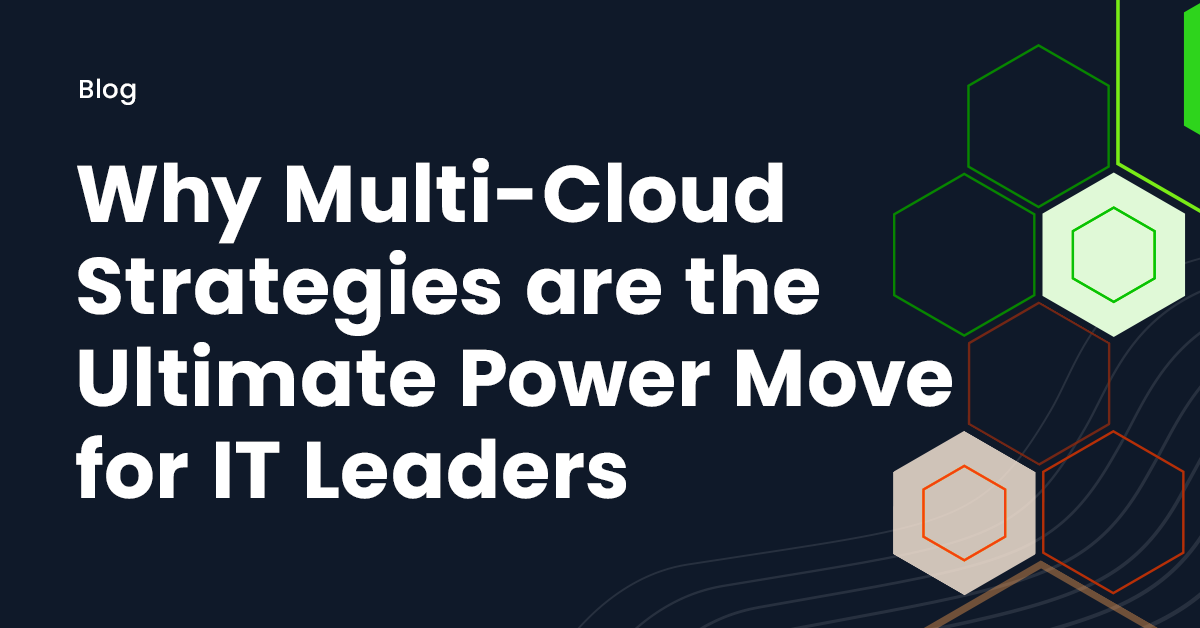Why Multi-Cloud Strategies are the Ultimate Power Move for IT Leaders
Nasuni discusses the growing adoption of multi-cloud strategies in enterprise IT to mitigate risks, control costs, and enhance performance.
March 18, 2025 | Nasuni

In today’s enterprise IT landscape, relying on a single cloud provider is like betting your entire business on one supplier — a risky move that can lead to skyrocketing costs, performance bottlenecks, and vulnerability to outages. Enter: a heightened focus on multi-cloud management.
According to Flexera’s 2024 State of the Cloud Report, 87% of enterprises now operate in a multi-cloud environment, leveraging more than one cloud provider to balance cost, security, and performance. By distributing workloads across multiple clouds, enterprises eliminate single points of failure, optimize performance, and avoid higher costs, which is a game-changer for IT agility and risk management.
Avoiding Vendor Lock-in: Power Through Portability
One of the biggest risks of relying on a single cloud provider is vendor lock-in, where high-switching costs, compatibility issues, and proprietary services make migration difficult.
In 2024, analyst firm IDC identified technical lock-in, data lock-in, service lock-in, and other forms of dependency as major pain points for organizations, making it challenging to switch providers without substantial costs or disruptions. Using technology solutions that can utilize multiple clouds ensures flexibility, giving IT leaders the freedom to choose the best services without being constrained by a single provider’s limitations.
Cost Optimization: Pay for What You Need, Where You Need It
Not surprisingly, managing cloud spending is a top priority for organizations. Flexera’s 2024 State of the Cloud Report states that 29% of respondents reported spending over $12 million annually on cloud services, with managing cloud spending identified as the foremost challenge, surpassing security concerns for the second consecutive year.
Since cloud providers offer different pricing, it’s important to note that cloud costs can skyrocket if not managed strategically. Thus, all decisions should be planned out well in advance to avoid major egress fees. When executed correctly, a multi-cloud approach allows enterprises to optimize spending by selecting cloud providers based on certain criteria. These include storage and compute costs, allowing workloads to be distributed where they are most cost-effective. It also enables dynamic workload shifting, so different clouds can be used for different workloads while switching providers as pricing models change.
Compliance & Data Sovereignty: Meeting Global Regulatory Demands
Compliance and data sovereignty have also become critical considerations for enterprises adopting multi-cloud strategies. According to IDC, global spending on sovereign cloud solutions is projected to reach $258.5 billion by 2027, reflecting a compound annual growth rate (CAGR) of 26.6% from 2022 to 2027. This surge is driven by the need for regulatory compliance, national legislation, and protection against extraterritorial data requests – which will only be accelerated by current day geopolitical pressures
Furthermore, Forrester’s The State of Digital Sovereignty in Public Cloud, 2024 report highlights that digital sovereignty concerns are significantly impacting organizations’ public cloud strategies. Regulations such as Europe’s NIS2 and DORA, Australia’s Data Availability and Transparency Act 2022, and China’s technology self-reliance policies are influencing how enterprises manage data across jurisdictions.
These insights underscore the importance of a multi-cloud approach, enabling businesses to navigate complex regulatory landscapes and maintain control over their data across various regions.
The Multi-cloud Advantage: Future-Proofing Enterprise IT
A multi-cloud strategy isn’t just an IT upgrade; it’s a competitive edge. It ensures total flexibility and adaptability in a rapidly evolving digital landscape. As cloud innovation accelerates, companies that embrace this approach will gain the ability to scale efficiently, improve data security, and take advantage of the latest innovations in cloud technology without being tied to a single vendor.
Ready to take control of your multi-cloud management strategy? Chat to a Nasuni representative today.
Related resources

Webinar
5 Reasons to Take a Multi-Cloud Approach to File Storage
An elightening conversation about how a multi-cloud strategy can help companies solve data growth challenges.
Learn more
Webinar
Hybrid Multi-Cloud Functionality Already a De Facto Must-have for Organizations
This webinar examines the features these hybrid multi-cloud solutions offer and how to choose the best one for your IT infrastructure.
Learn more
Multi-Site Collaboration
Easily move away from your legacy, on-premises infrastructure with Nasuni’s seamless cloud migration services.
Learn more